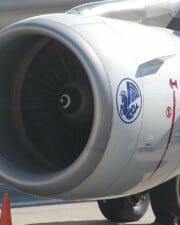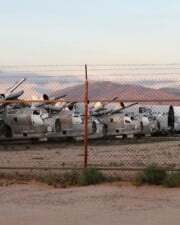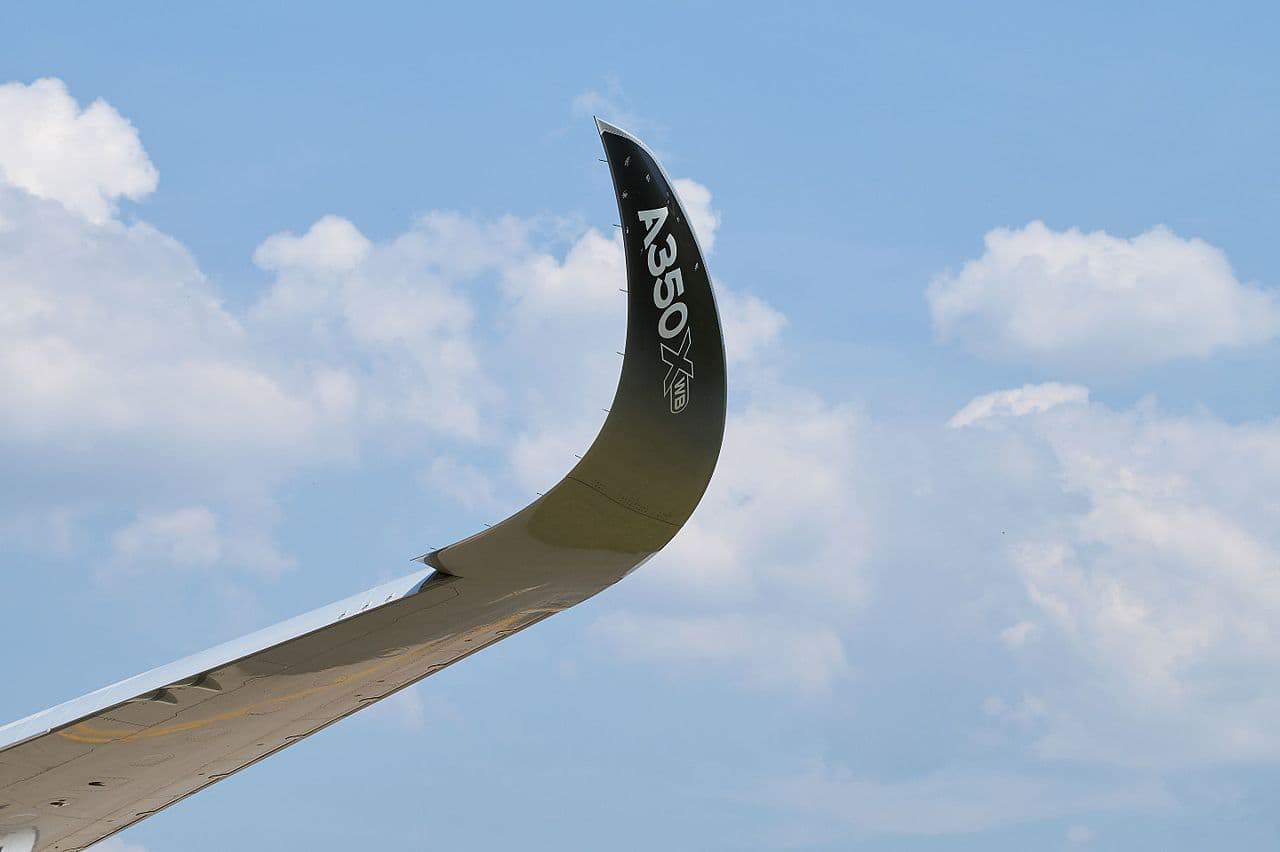Believe it or not, but planes get hit by lightning at a rate that is more frequent than you might expect. With between 8,000 and 20,000 planes in the air at any given moment, what are the odds of your plane being hit by lightning? More importantly, does it pose a threat to the safety of your trip?
Table of Contents
According to NTS Lightning Technologies Inc., a company that designs technologies that protect planes from lightning, the average airliner is struck slightly more than once per year. Other statistics, from the Federal Aviation Administration, share that a plane is likely to be struck by lightning once every 1,000 flight hours. When you break down the average length of flights and trips per year, this accounts to roughly one lightning strike per year per aircraft.
Why Do Planes Get Hit by Lightning?
If you travel by air frequently, you’re no stranger to long delays and cancellations due to inclement weather. The FAA has strict guidelines about plans taking off during thunderstorms or if lightning is in the area. A majority of the reasons planes remain grounded during lightning storms is to keep people safe on the ground, especially in the air traffic control tower.

When you think of lightning striking a plane it’s easy to envision a massive pitchfork connecting with the aircraft. However, most lightning strikes are much milder and due to the fact that airplane initiates the electric discharge between ionized clouds and the plane. Often times, you wouldn’t be able to feel the effects of this static electricity discharge aside from the likely turbulence of traveling through a cluster of clouds.
Planes are made of aluminum and carbon fiber, so they are natural conductors of electricity. There are many reasons why a plane may be struck by lightning, but since the dawn of aviation, engineers have designed ways to keep pilots and passengers safe.
How Planes Are Protected from Lightning Strikes
Airplanes are an excellent conductor of electricity. Similar to why it is safe to be in a car or automobile during a thunderstorm, a plane is usually enclosed with aluminum or carbon fiber, which will allow the electricity to travel around the outer shell of the aircraft and stay out of the cabin. If you look out on the wings of a plane, you’ll even find lightning rods designed to protect the aircraft in the event of a lightning strike.

Engineering has been essential to keeping aircrafts safe and an entire industry has been born from that mission. For example, NTS Lightning Technologies Inc. in Pittsfield, Massachusetts has been working with Boeing and NASA for years generating models and developing new technologies meant to keep airplanes safe.
After studying lightning strikes, engineers have learned that lightning is more likely to strike the nose or wingtip of an airplane. The body of the plane is designed to be completely encapsulated with aluminum and carbon fiber which enables the electric current to flow throw the outside of the plane and out through the tail, keeping all passengers safe and sound inside the cabin.
Has a Lightning Strike Ever Led to a Crash?
Sadly, the answer to this question is yes. However, it is important to note that the last commercial airplane to ever crash due to a lightning strike came in 1963 and, as a result, the FAA made considerable new safety regulations to ensure that the rare event never occur again.
In 1963, the ill-fated Pan American Boeing 707 was struck by lightning which ignited the fuel tank which led to an explosion over Elkton, Maryland.
While the odds of such a precise strike were extremely low, the incident left engineers, the National Transportation Safety Board, and the FAA scrambling to find answers to ensure that this type of accident never happens again.

As a result, the FAA mandated more comprehensive checks of electrical wiring and the fuselage of planes has been engineered to better control the flow of electricity through the exterior of the aircraft.
These safety regulations also mandate comprehensive tests of the fuel tanks to ensure that even the slightest spark can’t trigger an explosion.
Thanks in large part to the lessons learned from the 1963 crash, there has not been a crash on a commercial airline due to lightning in over 55 years.
Planes Remain Safe Despite Lightning
Engineering has continued to evolve to keep planes safe from lightning strikes. The lessons learned from the 1963 Elkron crash and the work being done at NTS Lightning Technologies ensure that people are committed to keeping air travel among the safest ways to travel.
In 2019, the odds of being involved in a fatal incident on an aircraft would be 0.18 in 1 million flights according to a To70 report. Statistics continue to creep towards there being a one in a billion chance of losing your life in a commercial plane crash.
Air Travel Is Extremely Safe
To put the sense of danger into perspective, the turbulence associated with traveling through stormy weather is more threatening to your safety than a lightning strike.
And no, this is not because turbulence will bring your plane crashing to the ground (the last such incident was 1966), but rather because if you’re not buckled up turbulence could send you for a spill. So please remember to respect the “fasten seatbelt sign”.

Science, engineering and federal regulations have all partnered to ensure that air travel remains an extremely safe means of transportation. When designing a plane, models are used to put these machines under extreme duress that you would be unlikely to actually encounter in the skies.
Over 55 years of safety from lightning strikes should hopefully put your mind at ease when you think about the billions of flights that have successfully navigated stormy weather since then.
Also, be reassured that sciences in meteorology have improved as well and flight patterns can more readily be altered to avoid extremely dangerous skies despite the fact that planes can (and have) flown through thunderstorms, blizzards, and even hurricanes safely.
Next time you are on a flight and find yourself concerned about lightning striking the plane, remember to trust in the science and engineering of flight. Once you do that take that captain’s advice to, “sit back, relax, and enjoy your flight.”
Related Posts











